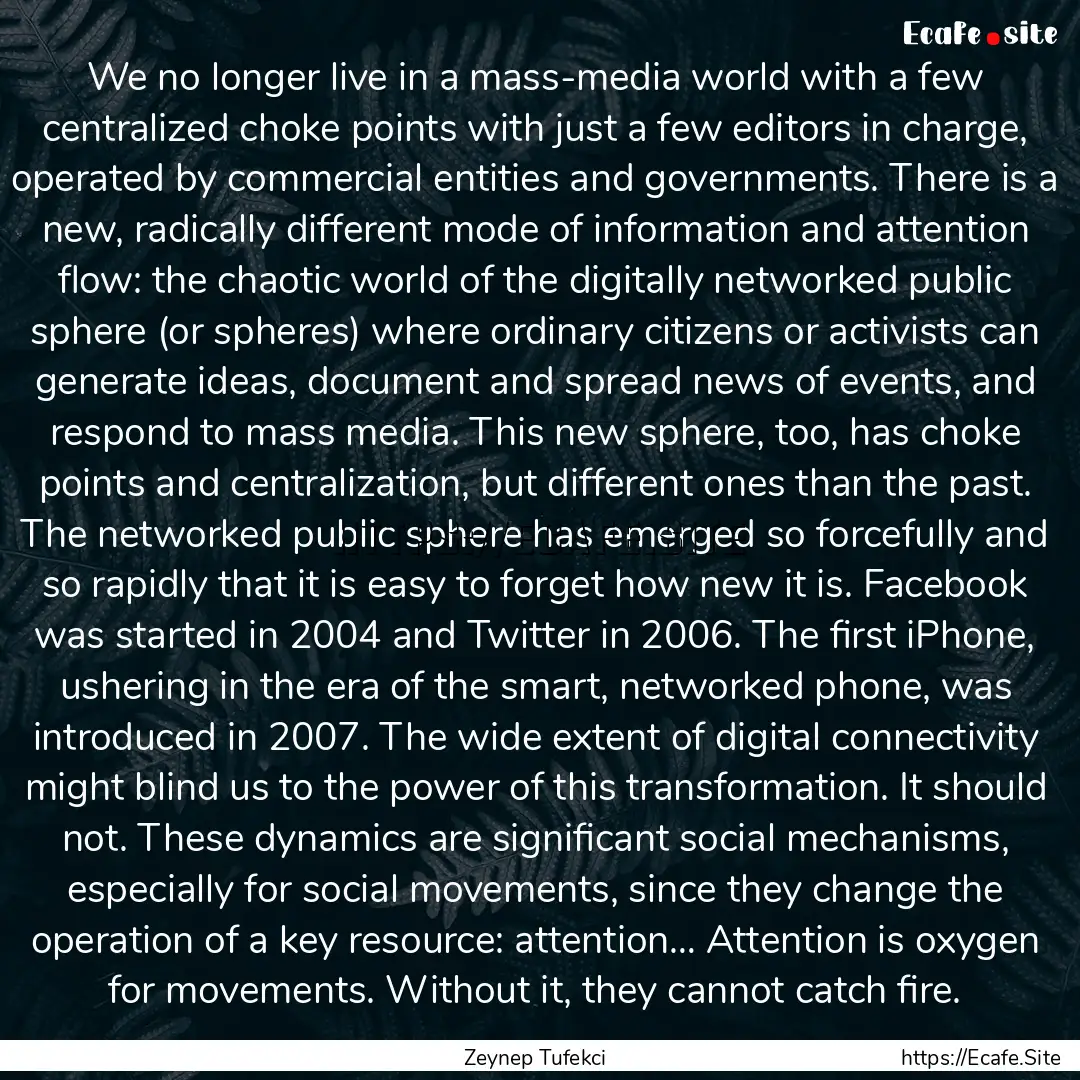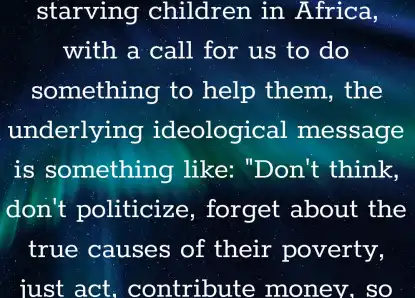
Report, if you have a problem with this page“ We no longer live in a mass-media world with a few centralized choke points with just a few editors in charge, operated by commercial entities and governments. There is a new, radically different mode of information and attention flow: the chaotic world of the digitally networked public sphere (or spheres) where ordinary citizens or activists can generate ideas, document and spread news of events, and respond to mass media. This new sphere, too, has choke points and centralization, but different ones than the past. The networked public sphere has emerged so forcefully and so rapidly that it is easy to forget how new it is. Facebook was started in 2004 and Twitter in 2006. The first iPhone, ushering in the era of the smart, networked phone, was introduced in 2007. The wide extent of digital connectivity might blind us to the power of this transformation. It should not. These dynamics are significant social mechanisms, especially for social movements, since they change the operation of a key resource: attention… Attention is oxygen for movements. Without it, they cannot catch fire. ”

Zeynep Tufekci
From : Twitter and Tear Gas: The Power and Fragility of Networked Protest



